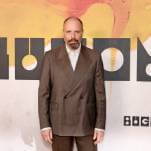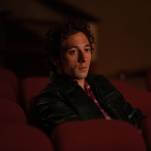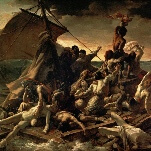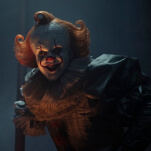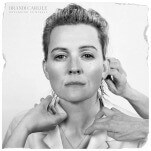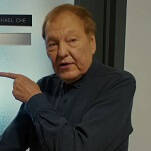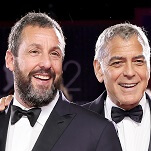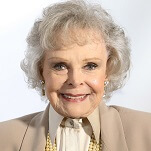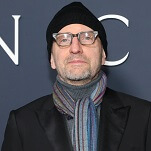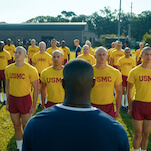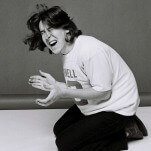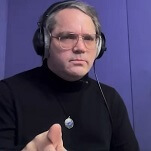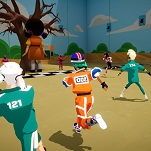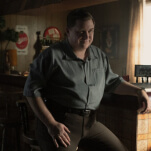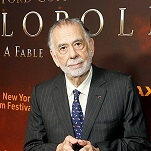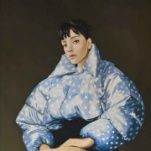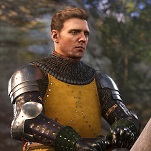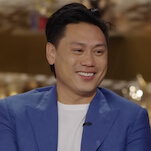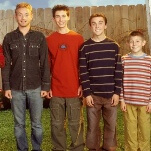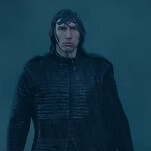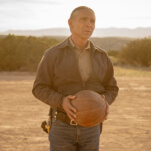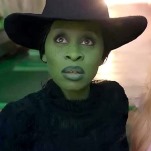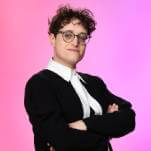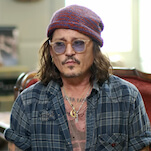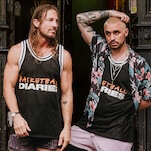He does a lot of stuff—or he did a lot of stuff—with stationery and printing. He did this amazing project that was made up of these blank sympathy cards—and this was during the age of AIDS—so it was just like, “We offer our sympathy for the death of,” and there was just a space. And then there’d be a normal sympathy message right underneath it. It really moved me when I saw it, and I loved the idea that these were common things—a business card or a piece of stationery or a sympathy card—but he used them in these ways that transformed their meanings.
KH: He did.
AVC: This is a big question, but how do you define art? What makes these cards art?
KH: Defining art is huge, I feel like it’s such a subjective thing. It’s more like what’s not art. You know what I mean? I think there can be an art in the way people live their lives, and art can be a gift someone gives to somebody. I think music can definitely be art; I also think music can be crap and not be art. But I definitely think that art can be everyday moments. I don’t think it has to be a product.
AVC: It can be a show or a performance.
KH: It can be a show or it can be a moment between friends.
AVC: Blanchon did so many different kinds of work. He made short films and took photos and produced stickers.
KH: He also sent out these cards every time he changed addresses. He’d send out these really insane, poetic cards that were kind of true, but kind of not true. They were totally inappropriate for a change-of-address card. You’d send out a change-of-address card before the Internet, and it would just be like, “Hey, my address changed. It used to be this and now it’s this.” Then you’d sign your name.
His would say, “I’m at Joshua Tree with this hot guy that I met, and when I was 10 years old I bit a piece out of my brother’s mouth, and my parents are Jews For Jesus. Please don’t tell them my new address. Robert.” They were printed on cards, and he’d send them to everyone with his new address. They were art. And later, after his death, a lot of people found out that the stuff he wrote was total bullshit. His parents weren’t Jews For Jesus.
I think that’s one of the things that attracted me to his work: Some of it was personal things that he would do in his life; some of it was his teaching. He’d give these lectures that involved The Golden Girls. But, also, he was incredibly intelligent and some inspiration to me as a musician because I think a lot of his whole thing was that he didn’t feel like he had to be prepared or super-prepared to do a lecture. He just needed to be present as a person and actually speaking to his students, a.k.a. his audience. And that’s something, as a performer, I’ve started to do. I’m definitely a control freak and I like to prepare as much as I possibly can, but I’ve been doing this so long and I feel like maybe I can open up now.
AVC: It might be a stretch to say that sending out a novelty address card was fun for him, but why not send one of those out rather than a boring old normal one?
KH: Right. And the lecture that is referencing The Golden Girls was probably more interesting for him than going up there and reading a bunch of text. Teachers are performers, just like I am. I deserve to have fun, and I’m not just up here to serve you, like I’m a waitress. Sometimes I’m just like, “What would Robert do?” Robert wouldn’t be freaked out right now. He would be trying to enjoy it. So I freak out, and then I go, “I’m just going to be in the moment.”
AVC: When you write a song, are you thinking of it like you’re putting together a piece of art?
KH: Definitely. The thing about The Julie Ruin that I really thought about a lot was not overthinking. For the first time, I was going to make something and not overthink it. I’m letting the songs be the songs.
AVC: What kind of art do you find yourself drawn to the most?
KH: I like art with a sense of humor. I don’t have a huge art education to understand everything. I don’t think that means that art has to be watered down to the lowest common denominator, though. I don’t think you have to go to college to be able appreciate great art, but I like art that doesn’t take itself too seriously. That’s the kind of art I’m drawn to. And if it makes me laugh in any way or has a somewhat humorous edge, I really like it.
AVC: Robert didn’t necessarily work in collages, but the way he positioned pieces next to each other was important. When you’re writing a song, are you consciously thinking of how words and sounds go next to each other?
KH: Yeah. It’s sound collages and permutations and layering stuff. I get a lot of vocal melodies in my head, and I come in with those and maybe a little bit of the music that goes in underneath it. I just bring that in and the rest of the band just starts writing and I go, “I want the chorus or I need the bridge to go here,” or, “I want it go higher here,” so it really is more of a collaboration where everybody is fantastic to work with. And having those kinds of musicians in a band makes a big difference. I’ve never had musical training. I’ve never been able to say, “Let’s change this to B-flat.” You know what I mean? Now I can come in with a big idea that I’m trying to explain or sing to them, and then they start to fill it in and all that.
AVC: You probably just taught a lot of readers about Robert Blanchon, who they might not have known about before.
KH: Visual AIDS has an archive of all the artists that died of AIDS to make sure that their work doesn’t get thrown in the trash. They do these online tutorial exhibitions where they bring people in to curate. But anyway, I went to NYU where the project is, and I was hanging out with them and I saw all these boxes in their office. And I was like, “What are all these boxes?” And they said, “This is all Robert Blanchon’s stuff.” And I was like, “Oh my God, he’s one of my favorite artists,” and I was really upset that all of his stuff was just stacked in these boxes in this office. Then the curator said, “Oh, we just got this great collection of Robert Blanchon’s stuff,” and I started crying because I was just kind of relieved that they were archiving them. So, anyway, that was just a quick little sidenote about Robert. Now, I’m crying.
